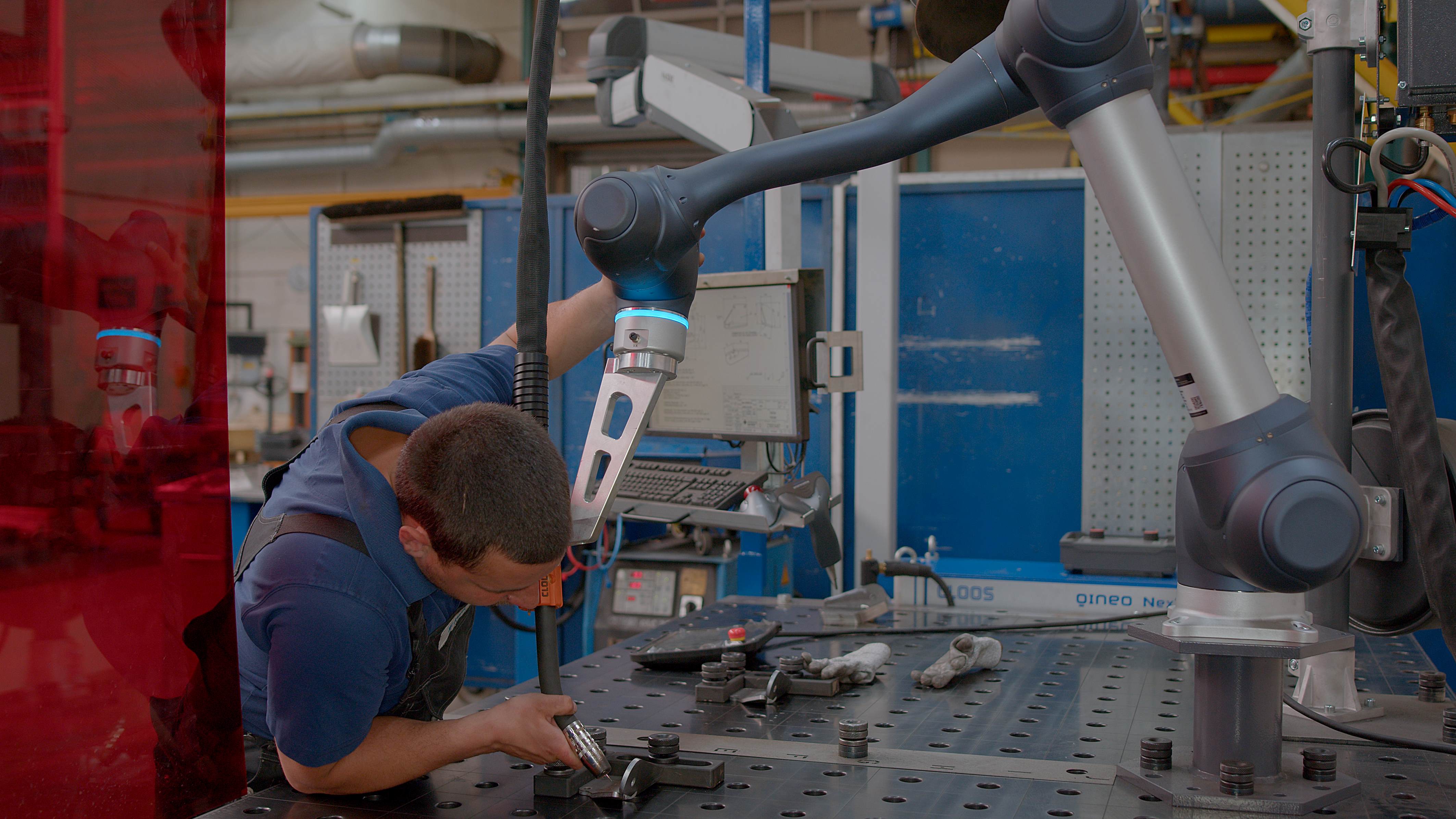
The cobot revolution
Submitted by:
Sara Waddington
Glüpker Blechtechnologie GmbH is facing the difficult challenge of finding suitable manual welders due to the shortage of skilled workers. The sheet metal specialist has therefore invested heavily in automation solutions over recent years. To weld even small batch sizes economically and with the requisite quality, the company now also uses CLOOS cobot welding systems.
Lasering, edging and welding: since its foundation in 1981, Glüpker has been continuously expanding its expertise in sheet metal processing, with its headquarters at Neuenhaus in Lower Saxony, Germany, and a new Rathenow site in Havelland. Glüpker has relied on CLOOS technologies for both manual and automated welding for around 30 years.
Its first robot system was put into operation in the early 1990s. Today, the company uses more than 30 robot systems for automated welding. These include compact robot cells for welding small parts and larger systems with several robots for welding complex components. By making investments in automated production technologies, the sheet metal specialist wants to further expand its work quality and productivity as well as sustainably secure its competitiveness.
Cobot welding in focus
Glüpker processes a large range of components for companies in various industries.
“Our customers appreciate our short processing times and high-quality standards,” explained managing director, Jürgen Gerst. “That's why we continuously invest in modern machinery.”
Glüpker commissioned its first ‘Cobot Welding System’ in 2020. Two more were added in the following months. The compact and complete packages were delivered completely ‘ready to weld’. This enabled Glüpker to seamlessly integrate the cobots into existing production processes. Now, the cobots mainly weld smaller components up to a size of half a metre.
“Using simple programming, we can now also weld small batch sizes automatically [and economically],” said Gerst.
“A torque sensor in each axis allows the cobot to be programmed and moved. The intuitive operation significantly increases work efficiency. Individual adjustments are possible on the user-friendly touch control panel with macros specially developed for welding. The Freedrive option with foot switch and the intelligent safety concept guarantee sensitive and safe control of the cobot. Another special feature is the simple restart after an emergency stop, as no extensive unlocking or free movement of the robot is necessary,” CLOOS added.
The Cobot Welding System is equipped with the QINEO NexT MIG/MAG welding power source. For [seamless] interaction between the welding power source and the cobot, the welding control is integrated into the robot controller so that no additional controller is required.
Human-robot interaction
“Cobots and employees share the tasks and complement each other perfectly,” confirmed Gerst. “Since the set-up and welding processes run in parallel, we were able to significantly increase our productivity.”
To read the rest of this article in the April 2024 issue of ISMR, please see https://joom.ag/J6Zd/p48
